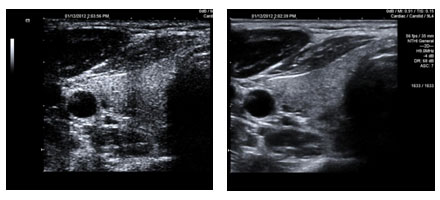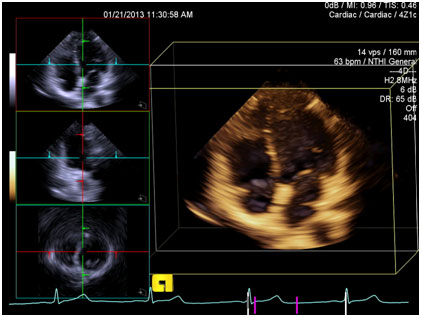 CUDA Spotlight: Ismayil Guracar By Calisa Cole, posted June 7, 2013 Real-Time Signal Processing in High-Performance Diagnostic Ultrasound ImagingThis week's Spotlight is on Ismayil Guracar, a Senior Key Expert at Siemens Medical Solutions USA. Ismayil and his colleagues have applied CUDA to the high-data-rate signal processing pipeline of the ACUSON SC2000™ ultrasound imaging system. In addition to replacing existing FPGA- and CPU-based processing functions, the team has been able to rapidly extend the capabilities of the system to achieve improved speckle reduction, information content and lesion conspicuity. Q & A with Ismayil GuracarNVIDIA: Ismayil, tell us about your work at Siemens Medical Solutions. I have been an enthusiastic advocate of GPUs in our organization and have been teaching and leading discussion groups on CUDA programming for several years. NVIDIA: What are some of the key challenges in the field of ultrasound?
Accurate assessment of dynamic heart function is a critical need. Real-time 3D ultrasound imaging of the heart (4D) requires processing at least 100 megasamples per second with minimal latency, which is a big challenge Collecting all of the information needed for an ultrasound exam in a single heartbeat without stitching together data from multiple heartbeats enables better quality imaging and speeds up example time. This is especially true in many disease states with irregular heartbeats and also enables real time interventional guidance and automatic measurements. GPU computing enables us to apply signal processing algorithms to dramatically improve real-time ultrasound imaging of the heart.
NVIDIA: What role does GPU acceleration play? Doing this in a power-efficient (especially for handheld applications) and cost-effective way is a big challenge and I am excited that NVIDIA is investing so much in developing the GPU platform and tools. NVIDIA: Twenty years from now, what can the average person expect in terms of an ultrasound experience? Over the next decade I also see ultrasound in a larger role in disease screening, diagnosis and treatment with the growth of new parametric imaging modalities such as targeted contrast and elasticity. Ultrasound can provide information on biological processes occurring on a molecular level. NVIDIA: How did you become interested in this field? Since then I have gone back to learn more, taking additional courses in medical imaging and biology and working with others to advance the field. There are so many interesting problems to be solved and there is still a lot of work to be done. Bio for Ismayil GuracarIsmayil Guracar has been working in the ultrasound imaging field for over 26 years. He is currently a Senior Key Expert with the Innovations Applications Group at Siemens Medical Solutions USA, Ultrasound Business Unit, in Mountain View, California. He is a graduate of the University of the Pacific (BSEE) and Stanford University (MSEE). His interests include ultrasound image formation and high-performance real-time signal processing, especially using GPUs. He holds 63 US patents, was a Siemens Inventor of the Year (2002) and has pioneered new ultrasound technologies in the areas of parametric and molecular imaging and contributed to the development of many successful diagnostic medical imaging products. He is married, with two teenage daughters. When he is not thinking about ultrasound and CUDA, he enjoys cooking, helping teach math to high school students, photography, hiking and exploring the ruins of ancient civilizations, especially in ancient Lycia in Southwestern Turkey. He wonders about the lives of people who created technological and social solutions to cope with the challenges of their environment. Relevant Links Contact Info |

